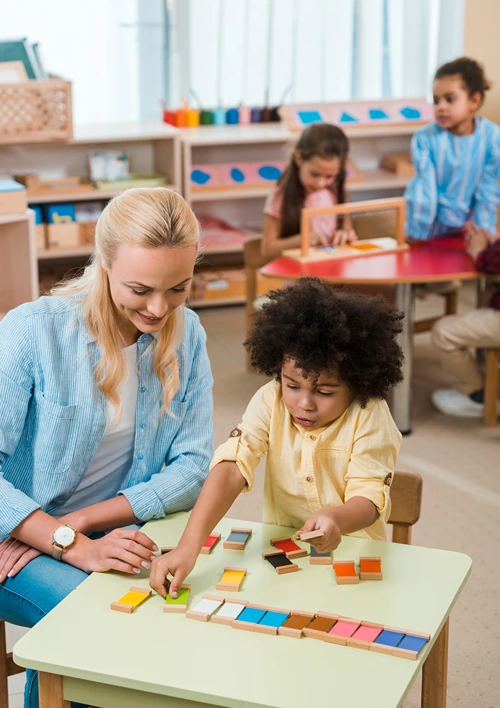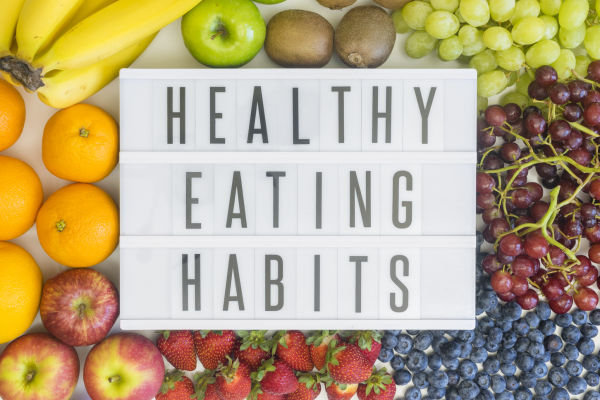Age-by-Age Guide to Teaching Kids 'Climate Resilience'
The planet is not the same as it was when you were a kid. The summers are hotter, and longer. There are more storms. The ocean is more acidic. More animals have become critically endangered. While it’s still controversial, it’s no secret that the majority of scientists affirm climate change models. These predictions range from minor inconvenience to total climate meltdown–and they can be intensely stressful. And while parents might be tempted to, they can’t protect their kids from climate change forever: They live on this planet after all, and will start to feel its effects sooner or later, whether you address it with them or not.
The truth is, our children will bear the brunt of the impacts of climate change. So how can parents talk honestly about climate change to their kids–and how can they counsel calm in the midst of stressful times? Here, experts so you know best to begin the process of building up climate resilience in your children.
Climate change is broadly defined by NASA as the long-term change in the earth’s average weather patterns that have come to define Earth’s local, regional, and global climates. Climate resilience means, according to The Center for Climate and Energy Solutions, “the ability to prepare for, recover from, and adapt,” to the effects of these changes.
According to a groundbreaking study in The Lancet, children are affected by climate change at every stage of development. Children are not only exposed to rising heat levels, air pollution, and extreme weather conditions, but also will have to grow up grappling with the mental health impacts of climate change—and result is climate anxiety that is being felt by both kids and their parents.
Climate change seems to negatively impact children’s mental health outcomes. A 2021 report by the American Psychological Association indicates that 57% of teens report climate change makes them feel afraid.
Because they are directly impacted by climate change, it's important for parents to have age appropriate discussions about how to deal with these effects in a positive way, which is where teaching climate resilience comes in.
Parents want to prepare their children as best they can to face the earth’s changing climate. But how old your children are will have a significant impact on how you speak to them about these threats.
Lisa Durette, MD, Director, Child and Adolescent Psychiatry Fellowship Program at University of Nevada Las Vegas says that climate change can be a traumatic concept in the mind of a child, and that recognizing your child’s life stage is the first important step to consider before even bringing up the idea of climate resilience.
“It's very important to frame the topic with knowledge of a child's developmental phase and stage, and to contextualize it with any pre-existing knowledge of anxiety, fears, traumas,” she explains.
You might not want to launch into a discussion with a child already experiencing trauma due to life events, for example. But a child who is in a calm state of mind can also understand concrete, honest explanations.
Zishan Khan, MD, Board Certified Child, Adolescent, and Adult Psychiatrist with Mindpath Health, offers these tips to discuss climate change based on the age of your child.
While it might seem extreme to talk to our young children about climate change, if you approach the topic the right way you can have a productive conversation with your child about what is happening to the environment they live in without scaring them.
Ruth, the mother of a five-year-old, is passionate about the environment and is already talking to her son about climate change.
“He’s not old enough to understand weather, but the idea that we take care of the earth comes up,” she says.
They talk about taking care of animals and plants, and how to recycle. And while that might seem small, it builds a level of understanding and caring for the earth that can be the foundation for more complex discussions in the future.
Let’s be real: climate change anxiety is a reasonable response to how rapidly and drastically the planet is changing. The news can be scary, especially for older children who are inheriting a world with divisive politics, where misinformation about global warming is pervasive. But parents can help soothe some of this anxiety, even if we can’t control the reality, by helping build up their resilience to these changes.
“Kids learn through observing the adults around them. As such, a great first step is for the adults surrounding the youth to be aware of their own reactions to media [and] news about climate change, and around their own, adult style, emotional reaction,” Dr. Durette explains.
Don’t accuse your child of overreacting, dismiss them by telling them to simply “calm down,” or judge them for feeling anxious if they come to you with worries about climate change.
“Let them know it’s okay to feel worried. I recently reassured my son that 'a lot of people care about the planet and feel this way too' so he wouldn’t feel so scared and alone,” Dr. Khan adds.
Modeling resilience and practicing self-care, such as how and when to take in information that can be scary, is important to learning about climate change realities without being shaken up.
Part of resilience is also acknowledging the good you can do, and highlighting real progress being made against climate change, Dr. Khan says.
At home you might look into how to purchase more sustainable products—from clothes to cleaning solutions—start composting, or even eat less meat. These are all goals your family can work toward together.
“Share positive stories about innovation, youth activists, and environmental success stories. You want to ensure they don’t believe it’s a lost cause or pointless to try and save our planet,” he says.
Deep breathing, yoga, and meditation, can be helpful for kids of all ages when coping with climate change-related anxiety, Dr. Durette adds. These activities will not only ensure your children are calm about climate change but create positive habits for the rest of their lives.
Take the conversation step-by-step
Remember: You don't need to rush your child's understanding of climate change. Tackling climate change in bite-sized chunks can help kids feel empowered to make change and defuse any anxiety in what could otherwise be a very overwhelming issue.
Ruth explains that while kids might not understand recycling, they do see your actions and want to emulate them. When her child has questions, she tries to answer honestly. Together, they read about the world in children’s books.
But, Ruth says, the way to make kids care is starting from a place of love, not panic, about the environment.
“If you want to talk to kids about environmental changes, you have to teach them that the environment is special. Real environmentalism starts with teaching your kids to love nature, and then being honest about the things we can do to help,” she affirms.
Learning how to care for our planet is a life skill all kids should develop from a young age—it might also be the first step in becoming more climate resilient as they get older. Here are some tips from both Dr. Khan and Dr. Durette about direct action kids can take to feel as though they are making a difference in their communities.
- Join school or community clubs related to saving the planet
- Talk about sustainable ways to live: planting a garden,
- Speak up: older kids can write letters to state senators and local legislatures urging climate care, or can use their voices in a climate march












